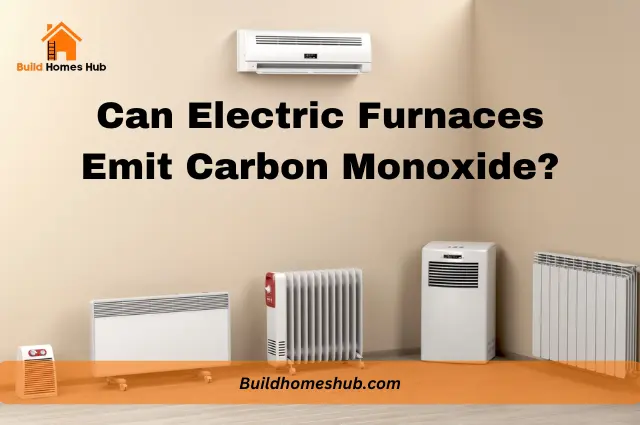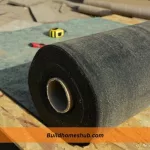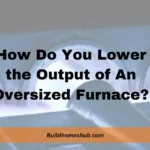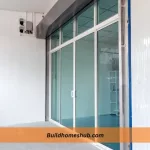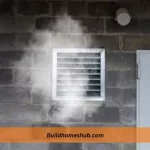The question of whether electric furnaces can emit carbon monoxide (CO) is a matter of significant concern, especially as the use of electric heating systems has become more common in homes and industrial applications.
Carbon monoxide is a colorless, odorless, and toxic gas; exposure to it can have serious health implications. Traditional gas furnaces are known to emit CO if not properly vented or maintained, but the potential risks associated with electric furnaces are less understood.
This post will explore the mechanics of electric furnaces, their design, and operation, and whether they can generate or emit carbon monoxide in any circumstances.
So, Can Electric Furnaces Emit Carbon Monoxide?
No, electric furnaces cannot emit Carbon Monoxide. Electric furnaces utilize electrical resistance to generate heat, a process that doesn’t involve the combustion of fossil fuels. Meaning electric furnaces don’t have the conditions to create this dangerous gas.
Under normal and proper operating conditions, electric furnaces do not and cannot emit carbon monoxide. The absence of any combustion process within the electric furnace mechanism virtually eliminates the risk of CO production, making them a safer option in this regard.
How do Electric Heaters Work?
1. Electric Current Flow
When you plug in an electric heater and turn it on, an electric current flows through a resistive heating element inside the heater.
2. Resistance and Heat Generation
The heating element, usually made from a material like nichrome, has some resistance to the electric current. As the electric current passes through this resistive material, it meets resistance.
3. Energy Conversion
The resistance causes the electric energy to be converted into thermal energy (heat). This is a manifestation of Joule’s first law, where the heat produced is directly proportional to the wire’s resistance and the current’s square.
4. Heat Distribution
The heat generated warms the nearby air, which then rises and draws cooler air towards the heater. Fans within some electric heaters help distribute the warm air throughout the room. In other designs, such as oil-filled radiators, the heating element warms a heat-conductive liquid that circulates through the radiator, and the heat is then radiated into the room.
5. Temperature Control
Many electric heaters have thermostats or temperature controls. When the room reaches the desired temperature, the thermostat may turn off the current to the heating element or reduce it to maintain the temperature.
6. Safety Measures
Modern electric heaters often include safety features such as overheat protection, which will turn off the heater if it reaches an unsafe temperature, and tip-over switches, which turn off the heater if it’s knocked over.
What Causes High Co in Furnace Exhaust
1. Incomplete Combustion
Carbon monoxide is produced when carbon-containing fuels (such as natural gas, oil, coal, or wood) are burned without sufficient oxygen. Incomplete combustion can occur if there is not enough oxygen mixed with the fuel, producing CO instead of carbon dioxide (CO2).
2. Poor Ventilation
If the furnace is not adequately ventilated, combustion gases, including CO, may not be effectively exhausted outside. This can result in an accumulation of CO in the exhaust or even inside the building itself.
3. Heat Exchanger Cracks or Leaks
The heat exchanger is a critical component of a furnace that separates the combustion process from the indoor air. CO can escape into the indoor air supply if it cracks or leaks.
4. Improper Burner Adjustment
If the burners in the furnace are not properly adjusted, it can lead to an improper mixture of fuel and air. This may result in incomplete combustion and the production of CO.
5. Blocked or Damaged Flue
The flue is responsible for venting the combustion gases outside. If it’s blocked, damaged, or poorly designed, it may not effectively remove CO from the building, leading to higher concentrations in the exhaust.
6. Using the Wrong Fuel Type
If the furnace is designed for a specific type of fuel and another type is used, it might not burn efficiently, leading to the production of CO.
7. Lack of Regular Maintenance
Without regular inspection and maintenance, issues like dirty burners, cracks in the heat exchanger, or blocked ventilation can go unnoticed. Regular maintenance helps in early detection of these issues and prevents the high emission of CO.
8. Old or Poorly Designed Furnace
Older furnaces or those that are poorly designed may not burn fuel as efficiently as modern, well-designed ones. This can also lead to higher CO emissions.
Conclusion
After a thorough examination of the components, operation, and design of electric furnaces, it is evident that these systems typically do not emit carbon monoxide. Unlike gas furnaces, electric furnaces do not rely on combustion, a process that produces CO as a byproduct.
The heating elements in electric furnaces are designed to use electrical resistance to generate heat, without the need for fuel combustion. Therefore, under normal operating conditions, there is no mechanism within an electric furnace that would produce carbon monoxide.
I hope to help you make the right choices with my content. I am passionate about building new homes and renovations. Follow me, on my socials, I drop nice stuff that may be helpful.

